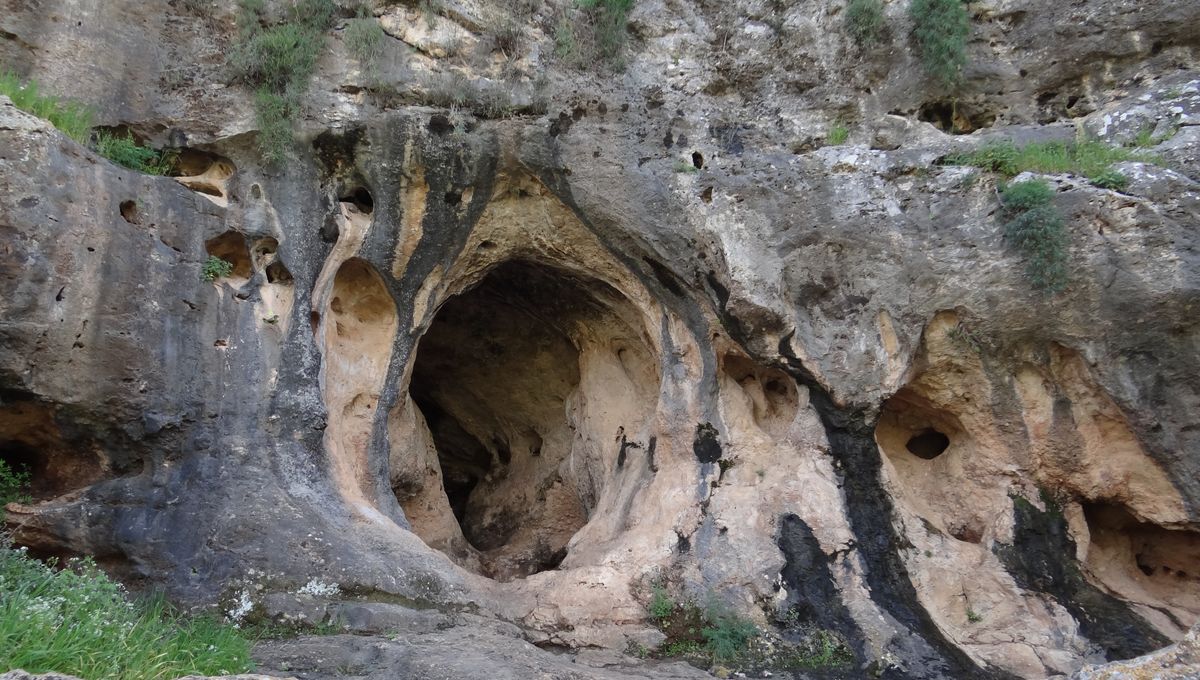Over 100,000 years ago, prehistoric humans in the Levant began to practice burial of their dead, marking a pivotal evolution in human behavior and cognition. Recent studies suggest that a young child from this era, buried in the world’s oldest known cemetery, may have been a hybrid of Neanderthal and modern human ancestry.
This burial tradition emerged in present-day Israel, with significant sites, including Tabun, Qafzeh, Nesher Ramla, Tinshemet, and Skhul, revealing early human burial practices. Despite the discoveries, the precise identities of those interred have puzzled researchers for decades. Some skeletal remains exhibit traits resembling archaic Homo sapiens, while others might lean more towards Neanderthal characteristics.
To address this mystery, a new study focused on the braincase and jawbone of a child buried approximately 140,000 years ago in Skhul Cave. Believed to be a girl who may have died between ages three and five, she was initially categorized as “a transitional Homo phase between Neanderthals and modern humans,” but researchers later identified her as potentially “Anatomically Modern Human.”
Skepticism remains regarding the Skhul child’s classification within the Homo sapiens lineage, particularly due to similarities with the skeletal remains of Neanderthal children from France and Spain. The study’s authors conducted detailed CT scans of the child’s neurocranium and mandible, as well as developing the first 3D model of her inner ear’s bony labyrinth.
Their observations found that “while the general profile of the reconstructed cranial vault in the posterior view matches with Homo sapiens, the mandible is similar in shape to Neanderthal.” Consequently, they propose that the child exhibits features suggesting a hybrid origin.
The research raises further inquiries about the individuals who buried this child, who lacked a singularly sapiens lineage. Anne Dambricourt Malassé, the study’s lead author, noted that when comparing the child’s bony labyrinth to various archaic hominins—including Neanderthals and early Cro-Magnons—similarities leaned toward modern humans, though certain dental characteristics pointed to Neanderthal traits.
The authors argue against assigning the child to a specific species, suggesting instead a categorization within a Skhul “paleodeme.” They emphasize that the inability to classify this ancient individual within a definite human lineage underscores the complex interplay of diverse human species in the Middle-Paleolithic Levantine region, which likely fostered a genetically and culturally mixed population.
Thus, they write, “contrary to the prevailing paradigm, the earliest known mortuary practices involving burials cannot be attributed exclusively to Homo sapiens over Homo neanderthalensis.” They assert that the recognition of the Skhul child as a hybrid enriches discussions surrounding the development of emotional behavior and symbolic thought within paleocognition.
In correspondence with IFLScience, Dambricourt Malassé acknowledged that while the findings contribute to understanding the paleoanthropological timeline, they simultaneously reveal numerous unresolved questions. “We conclude different Homo groups interacted, but what lineages?,” she queried, highlighting the absence of older Neanderthal fossils from the Levant, which opens the door to various untested hypotheses.
One intriguing possibility is that undiscovered fossils exist, or perhaps the Skhul child signifies a previously unknown Indigenous lineage in the Levant that evolved before Homo sapiens, potentially exhibiting Neandertal-like growth traits. “The question is: who were the adults who buried this child whose lineage was not exclusively sapiens?” she reflected.
This significant study appears in the journal l’Anthropologie.

